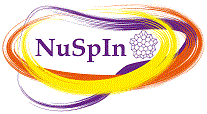Speaker
Dr
Grzegorz Jaworski
(LNL INFN)
Description
One of the possible methods of studying yrast and yrare states of extremely neutron-deficient nuclei is by using heavy-ion induced fusion-evaporation reactions. In such experiments, the nuclei of interest are produced with very low cross-sections, therefore clean reaction channel selection is essential. State-of-the-art gamma spectrometers coupled to high performing ancillary detectors are the key instruments to study the nuclear structure of this neutron deficient N~Z nuclei. The most exotic (and the most interesting) reaction channels are almost always associated with the emission of neutrons, two or more. Currently, a new neutron multiplicity filter named NEDA (NEutron Detector Array) is being constructed for this purpose. NEDA will operate with germanium arrays (AGATA, GALILEO, EXOGAM) on both intense stable and radioactive ion beams. This will enable to investigate the structure of exotic neutron-deficient nuclei, which were not experimentally achievable so far. The efficiencies of clean identification of 2n and 3n reaction channels are expected to be a few times higher for NEDA with respect to existing arrays.
The findings from the R&D and production phases, the current status of the NEDA project and its preparation for the AGATA campaign in 2018 will be presented. This involves results of Geant4 simulations on optimal single detector size, scintillator materials and geometry of the whole array. The results of measurements with the prototype and first NEDA detectors will be presented. The performance of first 20 NEDA detectors on the first in-beam experiment will be shown. Comparison between analog and digital procedures for the neutron-gamma discrimination and timing will also be discussed.
Primary author
Dr
Grzegorz Jaworski
(LNL INFN)

